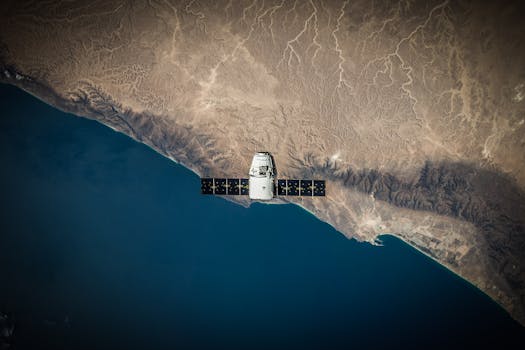
MEO Satellites: Revolutionizing Global Connectivity with Medium Earth Orbit Technology
Medium Earth Orbit (MEO) satellites are a type of satellite that orbits the Earth at an altitude of approximately 2,000 to 36,000 kilometers. This range is higher than Low Earth Orbit (LEO) satellites but lower than Geostationary Orbit (GEO) satellites. MEO satellites offer a unique combination of benefits, including global coverage, high bandwidth, and low latency, making them an attractive option for a wide range of applications.
History and Development of MEO Satellites
The concept of MEO satellites has been around for several decades, but it wasn’t until the 1990s that the first MEO satellite systems were launched. One of the earliest MEO satellite systems was the Iridium constellation, which was launched in 1998 and provided global mobile satellite services. Since then, several other MEO satellite systems have been launched, including the Globalstar and O3b constellations.
Benefits and Applications of MEO Satellites
MEO satellites offer several benefits, including global coverage, high bandwidth, and low latency. These benefits make MEO satellites suitable for a wide range of applications, including broadband internet, mobile communications, navigation, and Earth observation. MEO satellites are also used for remote sensing, weather forecasting, and disaster management.
One of the key advantages of MEO satellites is their ability to provide high-speed internet access to remote and underserved communities. MEO satellites can offer speeds of up to 1 Gbps, making them an attractive option for areas where fiber-optic connectivity is not available. MEO satellites are also used for mobile communications, providing voice and data services to users in remote areas.
Challenges and Limitations of MEO Satellites
Despite the benefits of MEO satellites, there are also several challenges and limitations to their use. One of the main challenges is the high cost of launching and operating MEO satellites. MEO satellites require sophisticated technology and complex systems, which can be expensive to develop and launch. Additionally, MEO satellites are subject to interference from other satellites and terrestrial systems, which can affect their performance and reliability.
Another challenge facing MEO satellites is the issue of orbital congestion. As more satellites are launched into MEO, there is a growing risk of collisions and interference between satellites. This has led to calls for more effective regulation and management of MEO satellite systems.
Future of MEO Satellites
Despite the challenges and limitations, the future of MEO satellites looks promising. Advances in technology are making it possible to launch smaller, more efficient, and more cost-effective MEO satellites. Additionally, the growing demand for high-speed internet and mobile communications is driving investment in MEO satellite systems.
Several companies, including Amazon and SpaceX, are planning to launch new MEO satellite constellations in the coming years. These constellations will provide high-speed internet and mobile communications to users around the world, and are expected to play a major role in bridging the digital divide.






